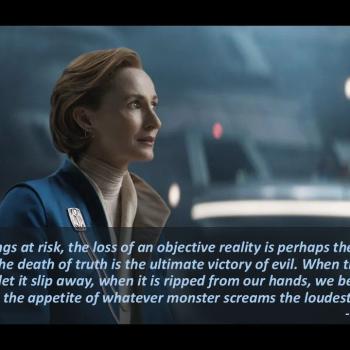There is an interesting entry on the Higgaion blog on the subject of teaching the creation stories in a non-literal fashion. What I generally ask my students is what conclusion the presence of a talking animal in a story in any other book or collection would lead them to conclude about its genre. I then follow up by asking why such common sense considerations are sometimes bracketed out by people reading the Bible. Perhaps I should add a further line of questioning: What would God have had to include in order to persuade you that this text is something other than a historical report? A big neon sign at the top of the page? The details in the story ought to be enough – such as the fact that the main character is called “Human” (although this is obscured in most translations by treating adam as though it were a proper name in Hebrew).
When read as a story about everyone, then something very interesting happens: it becomes clear that it is a true story, not in the sense of a factual or historical one, but in the sense of one offering an insightful analysis of human nature.
When I ask my students what would happen if one day a big red button with a sign above it that says “Do Not Push” suddenly appeared in a building on campus, they are unanimous: someone would push it. I also ask them when they first realized they were naked, and none can identify the moment. For such universal experiences that cannot be pinpointed and analysed, mythical language is what human beings turn to to speak about these things. The story is about loss of innocence, an experience of human being, and not merely of “Adam”.
I also point out the irony of reading the story as though it is about two historical individuals in the past rather than about us. In Genesis 3, blame-shifting and finger-pointing accompany the loss of innocence and the breakdown of relationships that follows. Could there be anything more ironic than a reading of this story that uses it to shift blame? – to say, in effect, “If it hadn’t been for Adam and Eve, I wouldn’t be in this mess. It is all their fault!”












